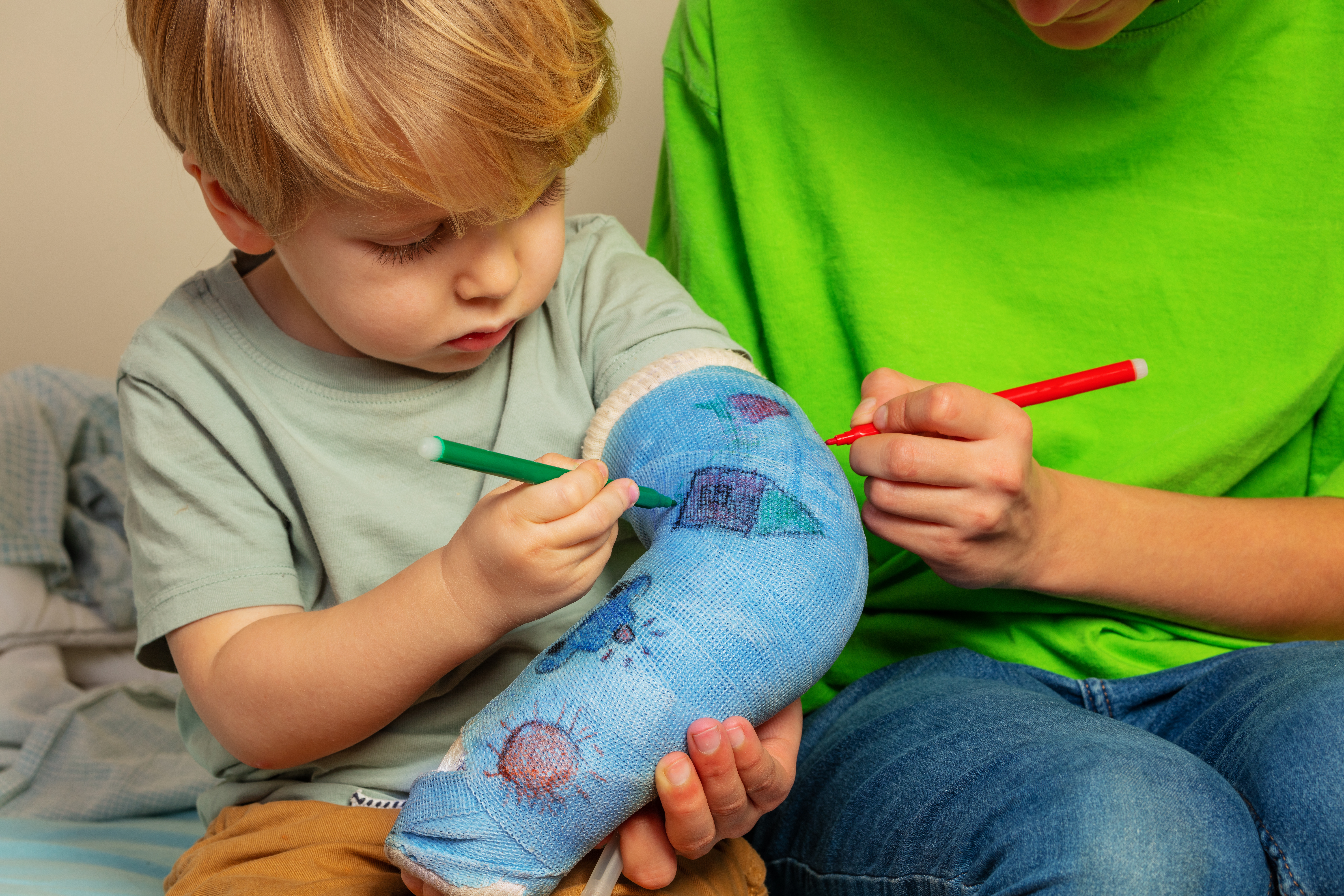From injuries on the playground to the soccer field, many kids will have a broken bone at some point during childhood. When your child is injured, it can be overwhelming to know when and where to go for care. Here are the signs of a fracture, and where to go if you think your kiddo might have a broken bone.
What is a Fracture?
Fractures or broken bones are injuries that occur when a bone is subjected to more force than it can handle, resulting in a crack or break. Children are particularly prone to fractures due to their active lifestyle, participation in sports and adventurous nature. Fractures in pediatric patients require special attention because children’s bones are still growing and have unique considerations, like growth plates, compared to adults.
Signs of a Fracture
Knowing the signs and symptoms of a fracture will help determine when and where to take your child for care. Here are some common signs of a fracture:
- Hearing a snap or grinding noise when they got hurt.
- Swelling, bruising or tenderness where it hurts.
- Pain when they move, touch or press on the area, or if they can’t put weight on it, especially if it’s a leg.
- The area looks bent or wrong. With really bad breaks, you might see the bone poking through the skin.
When to Seek Medical Attention
If your child has the following symptoms, it’s important to seek medical attention right away.
- A fracture with a cut or wound, especially if bone is visible
- An injury with obvious deformity, such as a limb that is crooked, angled or looks funny. Sometimes it is helpful to compare it to the other side.
- Significant pain that has not at least somewhat improved after a couple hours of rest, ice, elevation and Tylenol or Motrin.
Where to Find Care
Depending on the day and time, your family has several options when seeking care for a suspected fracture.
- Urgent or emergency care: Depending on severity of the injury, the emergency department or urgent care might be the best place for care. They can help manage your child’s pain and provide them with the appropriate durable medical equipment to manage their fracture.
- Pediatric orthopedic specialist: Kids are not little adults. They require specialized care, especially when it comes to their bones. A pediatric orthopedic specialist has the training and background to treat and manage fractures, and should be consulted for a suspected fracture in a child.
How Fractures are Treated
Although most broken bones simply need a cast, brace or boot to heal, other more serious fractures (such as compound fractures) might require surgery to be properly aligned and to make sure the bones stay together during the healing process.
Dayton Children’s Hospital is dedicated to the relentless pursuit of optimal health for every child within our reach. To connect with Dayton Children’s, visit www.childrensdayton.org.




